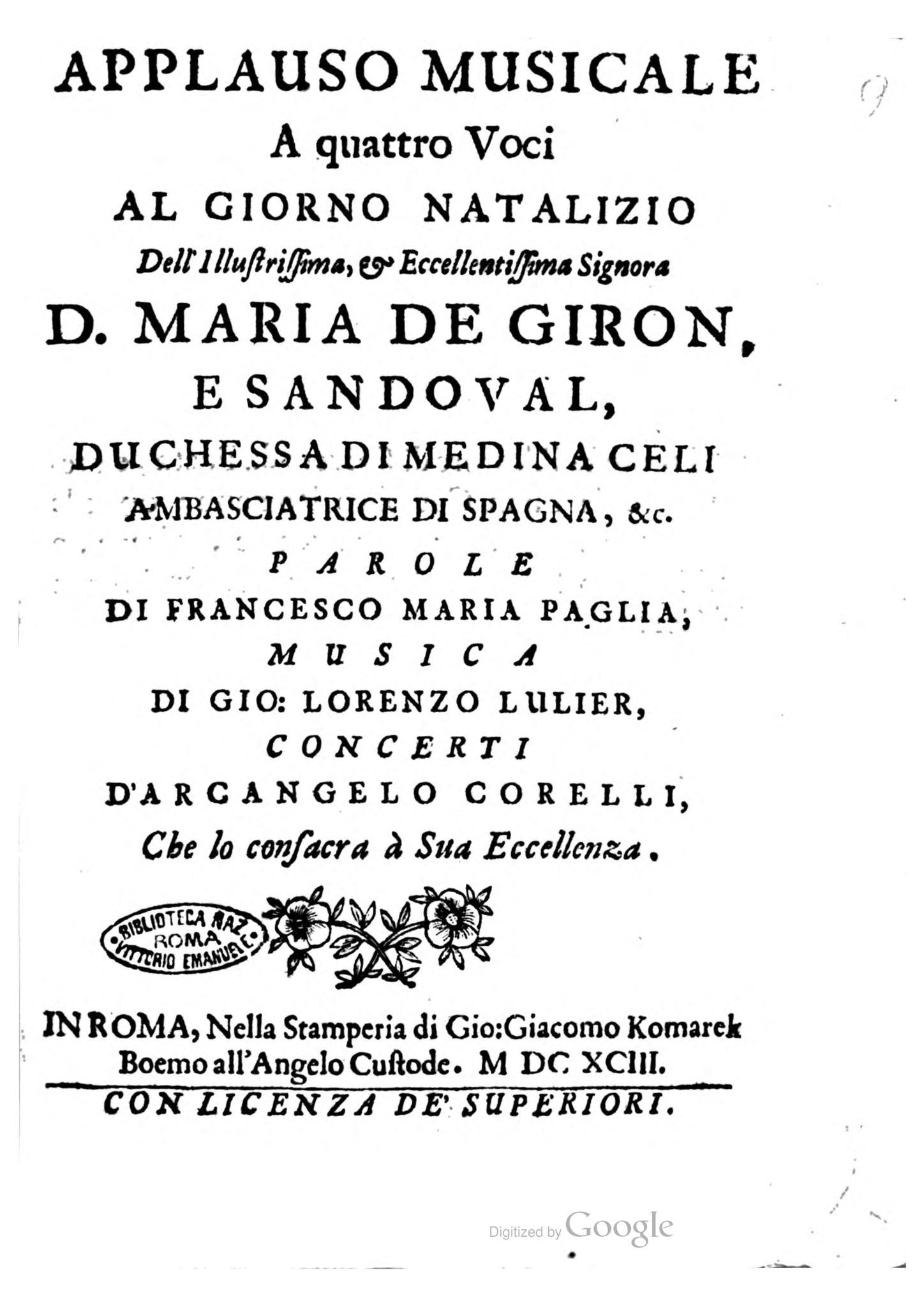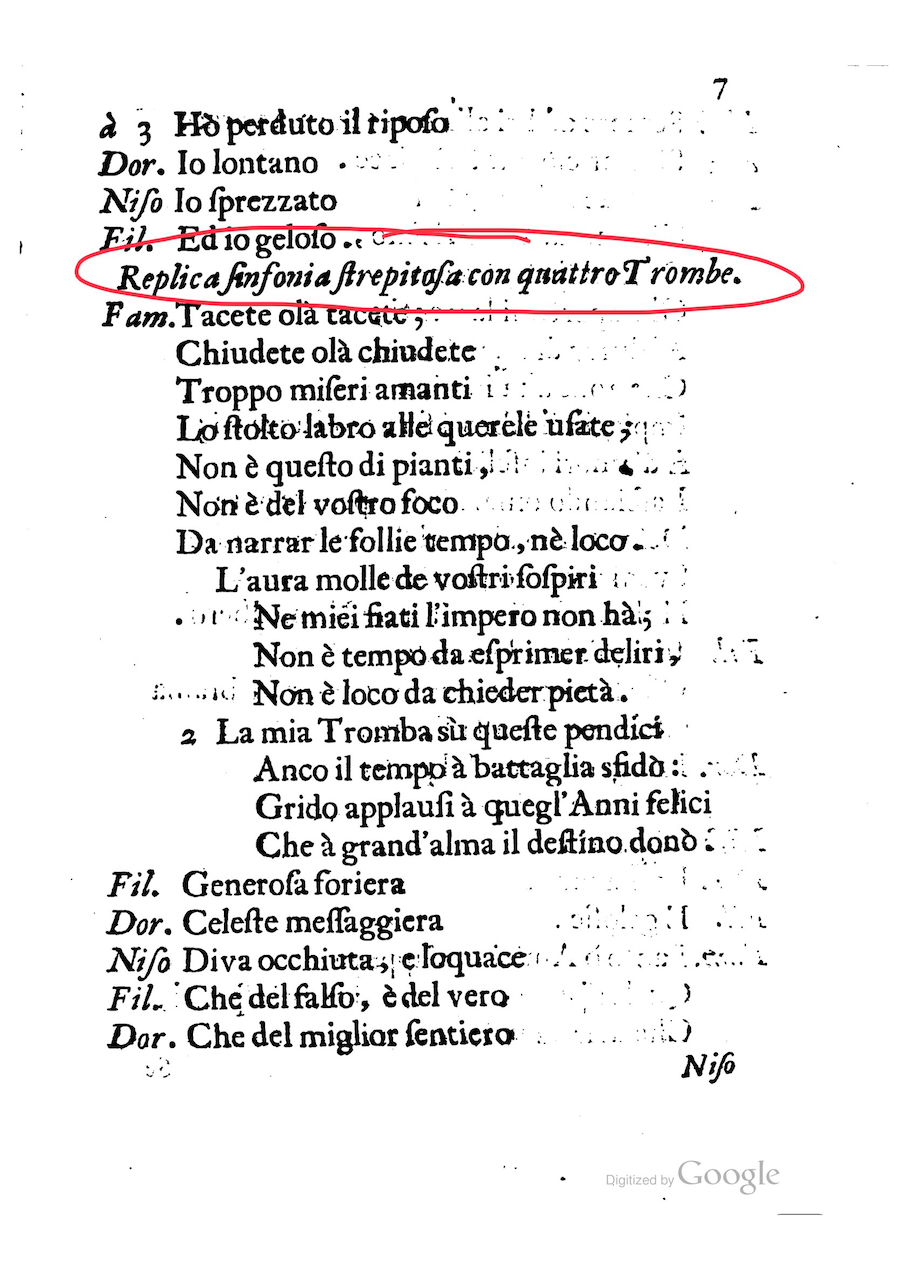If the key role of Corelli as a player and leader in the numerous Roman musical events and in their Sinfonie is beyond any doubt, references to him as a composer of them are more rare. As seen above, the instrumental music was considered more like an adornment of the vocal compositions hence, for instance, the title pages of the librettos often mention the composer of the Musica , very seldom the one of the Sinfonie . However, apart from the quotes by Crescimbeni and Berardi given above, 24 there are other specific instances in which Corelli is clearly mentioned as the composer of the instrumental music. For instance, in a document from the S. Agnese in Agone's archive we read: “Per regalo al Sig.r Arcang[el]o che portò le Composizioni” which means: “as a gift to Sir Arcangelo, who brought the compositions”. 25 Similarly, in the Avvisi Marescotti – a collection of chronicles of Roman events – a note of April 1689 mentions the performance of an oratorio whose Musica was composed by Bernardo Pasquini while the Sinfonie were “of the Bolognese .” 26 In other occasions, the fee paid to Corelli for a specific event exceeds by far the average payment he was usually earning, 27 and this might be a sign that his role was not only to play, but to compose as well. A cross check of the documents seems also to suggest that when Corelli was performing, the vocal works tended to include more Sinfonie than in average. 28 Overall, we have enough information to make us certain that Corelli was indeed composing Sinfonie and that these pieces were highly praised by Roman audience. Sadly, with one remarkable exception, all this music is apparently lost. 29 Lost is also the complete score of a large cantata of 1693, Applauso Musicale, which would have been particularly interesting in the perspective of this study as its survived libretto contains explicit evidence of a Sinfonia with trumpets composed by Corelli himself. Indeed, the libretto's title page reads: “Musica di Gio: Lorenzo Lulier, Concerti D'Arcangelo Corelli” while later on, in the libretto, one can find the mention of a: Sinfonia strepitosa con quattro trombe , literally “loud music with four trumpets”, which must have been an original composition by Corelli with a rare instrumentation including a particularly large brass section. 30
To summarise what we have discussed so far, the situation that we are facing is the following: we have extensive contemporary evidence of a regular use of trumpets in Roman Sinfonie around 1700. We have abundant references to Corelli as one of the main players of these Sinfonie and we know that he composed many of them. We also have proof that, at least in one occasion, he composed a Sinfonia with trumpets, and we have no reasons to think that this was an exception. Even though a handful of examples of purely instrumental pieces including trumpets have survived, none of them are attributed to Corelli and, overall, only one genuine Sinfonia by Corelli has come to us. This gap between the theoretical knowledge about Sinfonie and the actual existence of scores has been studied by scholars and a few hypotheses have been formulated about the reasons why all these pages have disappeared 31. Attempts have also been conducted to try identifying, amongst the survived Corelli’s scores, the ones that might have been originally conceived as Sinfonie , with trumpets in particular. If the archival and historical aspects are indeed very intriguing for the scholar, the modern musician is inevitably tempted to try to fill this gap with a musical proposal that is at the same time respectful of the historical evidence, yet express their own imagination and taste. As a result, the speculation about the lost Sinfonie is not new in the literature about Corelli and performances of his works including winds have been heard in the past years. Let us now scrutinise some of the hypotheses that have been formulated so far.

